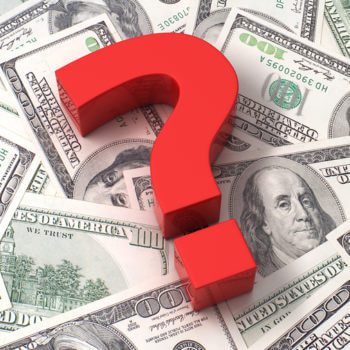AARP conducted surveys in an effort to understand just how much 401(k) participants knew about the fees associated with their retirement plans. The results were alarming and showed a wide discrepancy between savers’ expectations and the reality of their 401(k) plan costs.
Do 401(k) retirement plans charge fees?
The first survey found that 71% of participants believed they didn’t pay any 401(k) fees at all. Another 6% said they didn’t know if they paid fees or not. That’s a staggering number of people who are uninformed – or misinformed – about a very important piece of information.
There was a lot of hand wringing and attention when the data was released, and it led to numerous articles warning participants about “hidden fees.” Four years later, AARP repeated the same survey hoping for vast improvement. Instead, the second survey revealed that 65% of its respondents believed they paid no fees and 18% didn’t know whether or not they paid fees associated with their retirement plan.
It’s not only retirement plan participants who misunderstand the fees associated with their savings plans: there are also numerous plan sponsors under the impression that they pay nothing for the ability to offer their employees a retirement plan.
But be aware, just because you may not write a check out to your retirement plan each month or quarter, you’re still paying fees. The fees are there. Unfortunately, it sometimes takes some sleuthing to determine what they amount to.
Understanding 401(k) retirement plan fees
You may wonder, how does this happen? How can overt fees be so covert? The language of 401(k) plans is one of the main culprits. Anyone who has spent any time reviewing contracts and service agreements has no doubt seen terms like “12b-1,” “Sub-TA,” “basis points,” and “wrap fee.” But what do these terms mean? If you don’t have a helpful and forthcoming advisor, you may never know.
Another challenge to understanding retirement plan fees is the required disclosures that don’t disclose much. In addition, plan statements that net out the fees within gains or losses can lead to a sense of false comfort. The bottom line, however, is very little in this world gets done for free. Fund companies, advisors, Third Party Administrators, and custodians all do valuable work and should get paid. That being said, the amount they get paid should be reasonable and transparent.
A fiduciary advisor can help bridge this gap because they are obligated to act in the best interest of the plan participants. A fiduciary advisor will provide overall pricing in a clear and mystery-free manner. Such advisors are not paid by commission or by utilizing funds that offer Sub-TA or 12b-1 dollar arrangements, which means that a true dollar amount can be provided for each aspect of plan responsibility. When this happens, a plan sponsor will always know who gets paid for what.
When it’s time for a new 401(k) retirement plan advisor
What about your 401(k) plan? If an employee came into your office and asked you to itemize fees, would you be able to help? In your personal financial life, does your financial advisor provide you with an actual dollar amount for fees? The old adage of “ignorance is bliss” should not apply here.
If you haven’t looked at a quarterly statement in a long time, find one and review it thoroughly. Are the fees reflected? Then, read through a copy of your most recent fee disclosure. Can you understand how fees are calculated, or is the language convoluted and vague? If the latter, you may have fallen victim to retirement-plan speak, where an advisor bandies about terminology in such a confident manner that you’re afraid to ask, “What does this mean?” If any of this sounds familiar, it’s time for a review.
All costs can be determined. All of the information you need is available to you. You just have to work with the right partners. SYM can help.
Disclosure: The opinions expressed herein are those of SYM Financial Corporation (“SYM”) and are subject to change without notice. This material is not financial advice or an offer to sell any product. SYM reserves the right to modify its current investment strategies and techniques based on changing market dynamics or client needs. This blog is for informational purposes only and does not constitute investment, legal or tax advice and should not be used as a substitute for the advice of a professional legal or tax advisor. SYM is an independent investment adviser registered under the Investment Advisers Act of 1940, as amended. Registration does not imply a certain level of skill or training. More information about SYM including our investment strategies, fees, and objectives can be found in our ADV Part 2, which is available upon request.



